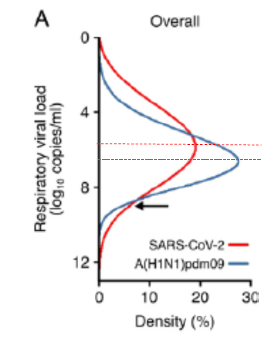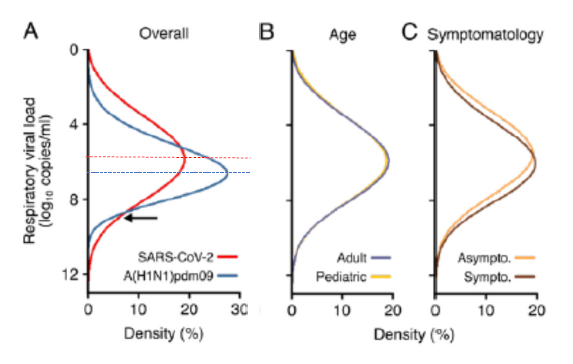
PART I: Connective Tissue & Immune System
#LongCOVID is shedding light on long-ignored, physiological aspects of Post-Viral syndromes (e.g. #MECFS)
One fascinating area is the role of connective tissue (and Ehler Danlos Syndrome #EDS) in their pathophysiologies.
1/
#LongCOVID is shedding light on long-ignored, physiological aspects of Post-Viral syndromes (e.g. #MECFS)
One fascinating area is the role of connective tissue (and Ehler Danlos Syndrome #EDS) in their pathophysiologies.
1/

Anyone following conversations in the #LongCOVID community might be surprised by the oversized prominence that #EDS plays.
Take @meghanor piece in @TheAtlantic where #EDS community is described working w/ #MECFS #ChronicLyme communities on LongCOVID...
theatlantic.com/magazine/archi…
Take @meghanor piece in @TheAtlantic where #EDS community is described working w/ #MECFS #ChronicLyme communities on LongCOVID...
theatlantic.com/magazine/archi…
@meghanor @TheAtlantic ... or the discussion that @polybioRF @microbeminded2 has w/ @RuhoyMD about potential link b/w connective tissue laxity & #MECFS.
In this video, the discussion focuses on craniocervical instability as a possible explanation for neurological symptoms.
In this video, the discussion focuses on craniocervical instability as a possible explanation for neurological symptoms.
@meghanor @TheAtlantic @polybioRF @microbeminded2 @RuhoyMD .. and more recently, a retrospective review from Sweden found that out of 229 patients w/ #MECFS, 41% had hypermobility as defined by Beighton score of 5 and higher.
If an age/gender specific cutoff for hypermobility was used, then prevalence of hypermobility was 50%!
4/

If an age/gender specific cutoff for hypermobility was used, then prevalence of hypermobility was 50%!
4/


@meghanor @TheAtlantic @polybioRF @microbeminded2 @RuhoyMD Naturally, hypermobility is overrepresented in this cohort of #MECFS - recognizing that only 3% of the general population have hypermobility (vs. 41% in this cohort).
5/
5/
@meghanor @TheAtlantic @polybioRF @microbeminded2 @RuhoyMD .. further, case series on Post-COVID describes: ".. combination of symptoms that occurs so often, that they can be carefully described as a clinical pattern. These manifestations include young age, female gender, joint hypermobility, the onset of pain after COVID-19 .. ."
6/
6/

@meghanor @TheAtlantic @polybioRF @microbeminded2 @RuhoyMD BUT #LongCOVID is recognized as a syndrome of immune dysregulations.
Is there a unifying link b/w connective tissue biomechanics & immune function?
Believe it or not, some evidence exists for this and comes from Acupuncture Research (specifically from @NCCIH_Director)!
7/
Is there a unifying link b/w connective tissue biomechanics & immune function?
Believe it or not, some evidence exists for this and comes from Acupuncture Research (specifically from @NCCIH_Director)!
7/
@meghanor @TheAtlantic @polybioRF @microbeminded2 @RuhoyMD @NCCIH_Director The story starts in 1990-2000s when Helene Langevin @NCCIH_Director recognized an interesting feature of needling.
When needling, acupuncturist typically look for "de qi" sensation - an aching heaviness that purportedly is a/w greatest therapeutic effect.
8/
When needling, acupuncturist typically look for "de qi" sensation - an aching heaviness that purportedly is a/w greatest therapeutic effect.
8/
@meghanor @TheAtlantic @polybioRF @microbeminded2 @RuhoyMD @NCCIH_Director When this "de qi" is elicited, acupuncturists often feel a "tug" on the needle clasically described "like a fish biting on a fishing line".
This needle grasp can be visualized as a tenting of skin when the needle is pulled.
doi.org/10.1096/fj.01-…
9/
This needle grasp can be visualized as a tenting of skin when the needle is pulled.
doi.org/10.1096/fj.01-…
9/

@meghanor @TheAtlantic @polybioRF @microbeminded2 @RuhoyMD @NCCIH_Director Langevin hypothesized that "de qi" grasping occurred through winding of collagen/elastic fiber around the needle.
Through some beautiful images and elegant robotic biomechanical measurements, she proved this hypothesis correct.
Collagen (in blue) shown wrapped around needle.

Through some beautiful images and elegant robotic biomechanical measurements, she proved this hypothesis correct.
Collagen (in blue) shown wrapped around needle.


@meghanor @TheAtlantic @polybioRF @microbeminded2 @RuhoyMD @NCCIH_Director Furthermore, she showed that acupoints - when mapped against cross sections of cadaveric arm - spatially correlated with fascia between muscles.
~80% of acupoints mapped to inter/intramuscular fascia: e.g., acupoint L3 overlies fascia b/w Biceps & Brachioradialis muscle
11/

~80% of acupoints mapped to inter/intramuscular fascia: e.g., acupoint L3 overlies fascia b/w Biceps & Brachioradialis muscle
11/


@meghanor @TheAtlantic @polybioRF @microbeminded2 @RuhoyMD @NCCIH_Director This was exciting news: here was an anatomical basis for acupuncture & somehow connective tissue might play a role in mediating its therapeutic effects.
@NCCIH_Director initially looked at mechanotransduction - effect of mechanical forces on fibroblast gene expression.
12/
@NCCIH_Director initially looked at mechanotransduction - effect of mechanical forces on fibroblast gene expression.
12/
@meghanor @TheAtlantic @polybioRF @microbeminded2 @RuhoyMD @NCCIH_Director But then focused on effects of biomechanical forces (in connective tissue) on inflammation.
Her intriguing f/u studies showed how mechanical forces can modify inflammation - carrying some implications for #LongCOVID & #EDS: to be covered in Part II of this series.
End/
Her intriguing f/u studies showed how mechanical forces can modify inflammation - carrying some implications for #LongCOVID & #EDS: to be covered in Part II of this series.
End/
• • •
Missing some Tweet in this thread? You can try to
force a refresh











